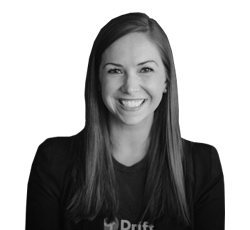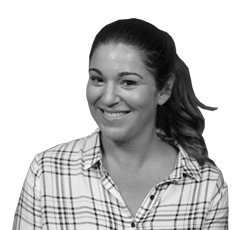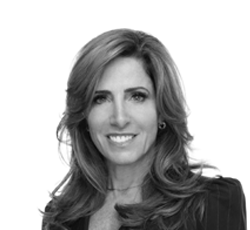How Mode’s hyper-focus on a specific customer persona increases retention and crushes the competition
Derek Steer
|
Co-Founder and CEO
of
Mode
.png)

Derek Steer


Episode Summary
Today on the show we have Derek Steer, Co-founder, and CEO of Mode.
In this episode, we talked about what drove Derek as an analyst to start Mode, what they do, and who their typical customers are.
We also discussed how Mode nudged competitors out of their customer’s workflow by having a hyper focus on technical analysts and what differentiates them in the data analysis market. Derek also shares how analysts at Mode analyze churn and retention and why you should also investigate churn even if it’s not a problem
Mentioned Resources
Transcription
Andrew Michael:[00:00:00] Hey, Derek, welcome to the show.
Derek Steer: [00:00:02] Andrew. Thanks for having me.
Andrew Michael: [00:00:04] It's a pleasure for the listeners. Derek is the CEO and co-founder of Mode, a collaborative data platform that combines CQL R and Python and visual analytics in one place, allowing you to connect, analyze, and share foster, uh, prior to mode.
Derek was a senior analyst at compass lexicon and then moved to serve as a data analyst at monitorization at Facebook, uh, from Facebook, he joined Yammer as an early member of the analytics team and followed on to serve as a principal product intelligence manager after the acquisition by Microsoft. So my first question for you, Derek is what was the unique insight that drove you to stock mode?
Like what were you fed up of doing or not doing as, as your role as an analyst?
Derek Steer: [00:00:46] Well, so I was coming off, uh, of a few experiences that, that all drove me in this direction. Um, the first one was going to Facebook, so. Uh, you know, going from compass Lexecon, which is a [00:01:00] consulting firm. So, so there, I was doing a pretty complex analysis of demand in antitrust cases and mergers.
So, you know, I, I remember calculating cross elasticities of demand among breakfast cereals for a proposed merger in the breakfast cereal space. Um, that's more complicated than the way that you model it then than the work that I have done at any company since then. Yeah, I can imagine. Yeah. And fun. It was fun introduction, you know, I really didn't know how to do any type of statistical programming.
Then I went to Facebook and I got trained to do that kind of the opposite thing, which is solve problems really simply, but make sure that the logic is sound right. Like think through the problem completely. And then just get within, you know, 5% accuracy, make sure that you're making the right decision and then move on to something different.
Right. And the tool that folks at Facebook were using were totally different. Like at this consulting firm, I was using SAS S [00:02:00] SAS, the kind of original statistical computing software. Uh, I was using state of like other stuff that's kind of specific to the economics realm or popular there. And I got to Facebook and it was all SQL and people were sharing their work pretty effectively in tools that they had built internally.
And it had to be sequel because Facebook just had so much data that it had to be processed somewhere with a ton of power. And at the time that was Hadoop, I don't know, you know, all the things that are going into their systems today, Facebook has built a lot of stuff internally. Um, but at the time I was writing, you know, SQL queries against this Hadoop cluster and sharing those with other people on my team and at the software that they built was great for that, I ended up going to Yammer for a variety of reasons.
And th the team there was super strong. When I arrived, they had built kind of an elementary tool, similar to what Facebook had, but, uh, but really there, there was a lot more to be done. And my, my, you know, mode co-founder Josh ended up building out a team at Yammer to [00:03:00] build. Internal data tooling that did this same kind of thing.
And if you were to go around and look at it, LinkedIn and Google and all the other places that were really known for using data. Well, at that time they were doing the same thing. They were building internal tools around this kind of cul workflow. They had similar mentalities for how to approach analysis, and it just became clear to me and to Ben and Josh, the other two founders of mode that everyone was going to want to work this way in the future.
Right. These are the leaders. They're all doing the same thing. The rest of the world is not eventually they're going to come around and we can be the people. We, we know how to build these tools. We've seen it before we've done it before. We can just be the people who supply that to the market. And that really was the impetus for mode.
Andrew Michael: [00:03:43] Very interesting. Uh, but I mean, it's, it's classic case sort of like, uh, solving and scratching your own itch. Interesting though, that you saw sort of the opportunity from the inside, out in the sense like you were working at some of the top companies that were implementing best practices, and then you [00:04:00] realizing sort of.
Other companies are going to want to do this, how the companies are going to want to catch up. Um, so maybe just give us a little bit of a brief overview of mode in a little bit more detail, like who would be a typical customer? Why would they want to use your product?
Derek Steer: [00:04:14] Yeah. So mode is often adopted by analysts and data scientists.
Um, those sometimes, you know, product leaders, engineering leaders, other folks, the thing that we do differently. So, so we're in the business intelligence category. Broadly. And what that means is the things that you produce in mode are reporting and dashboards to help with business. Decision-making I think that's what defines BI kind of broadly, but we're different from everyone else in the market in that our focus is, is on the analyst or data scientist first and on that technical workflow first.
So we provide things like. You know, direct sequel access and a really good editor, really great connection between that and Python notebooks. Uh, you can write RNR [00:05:00] notebooks as well. So kind of core tool set for that professional analyst is that thing that we have really dialed that's different from what the rest of the market does.
Now from there analysts data scientists will do their work, share with the rest of their company, you know, and build some dashboards that interactive things that other people can work with too. And we find that in places where motive successful, we're able to deploy company-wide right. So some of our, some of our biggest deployments are in the 5,000 plus seat range where they have super high engagement.
Because that flow of information through the data team out to other parts of the organization happens really seamlessly in mode, but it's a different perspective than the traditional business intelligence perspective, which is the technical group is going to do some configuration, essentially build a menu of metrics, and then it's going to be on everyone else to, to do [00:06:00] some elementary analysis.
Right. So, so with mode really it's about. Uh, flexibility and power and the notion that the best performing companies in the way that they work with data are going to have tight relationships between the data team and everybody else. And mode helps facilitate those.
Andrew Michael: [00:06:17] So that's interesting actually to say that.
So like you had said it more, the companies that you catering for is a culture of a service model where companies will go to the data team, to the business intelligence team with requests, for analysis, and then they'll have the specialist analyst doing the job as opposed to sort of the business intelligence team building out products and services to enable self-serve analysis.
Would that be an accurate depiction?
Derek Steer: [00:06:44] Well, what I would say is that even if you have a culture of self-serve analysis, you're going to have walls that you hit with self-serve in order to have a self-serve tool in the way that people normally think about them, [00:07:00] what that looks like is typically a drag and drop interface with a bunch of metrics that you can select and drag onto a chart.
And you, and you make your chart. The challenge with those is in order to get those metrics that you can select, someone's got to go in and predefine them, and then someone's got to maintain them. Make sure that they're correct. Right. It's a, it's a full-time job or many jobs just to make sure that the data there is correct.
You can't, you can't spec in everything that you might possibly want to do because it takes too much time. And it also becomes confusing in the system. Like, you know, there are five different ways that we might want to measure revenue, right? The, the revenue today, like what we call spot revenue at mode, uh, ARR, uh, we have MRR on, on some, you know, overages and other things that are not contractually agreed to gap revenue.
There's just so many different flavors of revenue and you. In some [00:08:00] cases we'll want one that's different from the, the most common one. Most commonly we're just booked HRRs with what we care about. Uh, but there's plenty of times when you want other stuff. If you build a system with all five of those metrics in it, it becomes confusing to the end user of like, which one of these am I supposed to use to make it correct?
So what ends up happening is people build out kind of the basics. And then when folks can't get, as far as they need with the basics, what do they do? Right. Like, imagine you are not an analyst or data scientist, you do some simple analysis with the metrics that are specked into the system. And then you've got follow-up questions beyond that.
Then you go to your data team and that's just how it works. So even if you want to have a self-serve culture, people are still always going to hit the wall. They're always going to go to the data team. And then what, and actually this is a really interesting thing with respect to mode. So, so we, when we started the company, we needed a way into companies, right?
Every company worth selling to at that time had Tablo already. So we need, we need a way [00:09:00] into the business with, with Tablo already there and. You know, this dynamic that I'm describing of you hit the wall and you go to the data team. This was already happening. It's just that that data team was. They were using desktop SQL editors, you know, desktop tools for Python and R like our studio or Jupiter notebooks, uh, maybe Excel or, or desktop Tableau for some visualization, they were sending around their work on Slack or on email.
I guess Slack, you know, it was just coming into existence when we started mode. Right. So it was, people were emailing stuff out. In some cases they had like a Google doc with a bunch of like SQL code in it that you could copy and paste. We saw this at a lot of early customers. It's like they, they just had a shared Google doc with all of the SQL scripts for, for things that they would copy and paste in.
Um, and it was just a real mess. And, and so mode would come in adjacent to Tableau and we would solve that problem because once, once folks would hit the wall in there in Tableau or whatever their BI tool was, they'd go to the data team. Data [00:10:00] team would have this totally broken workflow. Um, and, and their work, we would just get lost forever after they did it.
And so with mode, it was much more streamlined, much faster. They were able to share work with within their team and with other teams build off of each other's work and so forth. What happened, especially in like a lot of our early customers who have grown to be very big and longterm mode users over time is the data teams found mode to be so low friction as a way to work that we over time kind of nudged Tableau out.
And whether we notice Tablo out or not. One thing that happens for sure is people are sharing stuff in mode really broadly. And we, we kind of bump into Tableau where, you know, now you've got two tools where people are sharing data throughout the company. And this is the sort of most interesting competitive dynamic that we have is even though we are.
For analysts and data scientists in terms of who's adopting our product. We ended up being something that serves entire companies [00:11:00] and we have all the challenges that go with that.
Andrew Michael: [00:11:02] Yeah, it's super interesting. We're chatting about this a little bit at the beginning of the show, because actually Hotjar where I was previously.
It was heading up business intelligence. Uh, I actually onboarded mode to the company and I was quite a big fan of the service and we experienced the alternative in the sense that we started hiring analysts. We started looking at the way we were going to build out the team and ended up introducing. Uh, Tableau.
And then this became sort of like, we have these two tools. Now we need to decide one. And that the whole premise was we didn't want to be sending the team to multiple different locations. So I think just like you say, like you're coming in and squeezing them out probably happens both ways. And. I think it's a very interesting challenge when it comes to churn and retention as well.
From this perspective where you have these market dynamics at play, where, uh, your acquisition strategy, your routine land, and expand sort of model competes with an [00:12:00] alternative model where perhaps like Tableau typically, maybe would be targeting more of your. Buyers like the decision makers, like looking at sort of, who's going to be consuming the data as opposed to, who's going to be like producing these reports.
And I'm interested to talk a little bit about this. Like how have you seen this play out at mode? Like what are some of the things you've tried to do to sort of. Counter and tackle this. Cause I think, and correct me if I'm wrong, but it sounds as well, like your go to market strategy, your focus like an acquisition is on the analyst is unlike making sure you create this magic experience for them to be able to produce the work where maybe something like Tableau is more around who is going to be consuming this and focusing on that experience.
And you've opted for different ends of the markets, I think. Is that right?
Derek Steer: [00:12:51] Yes, that's right. And I suspect that we will be, you know, focused on the analysts and the data scientists, you know, first and foremost, and as our entry point [00:13:00] forever, because that's where we're differentiated in this market, you know?
And I think that's also a really, really good audience. I'm a little biased of course, because I did that job myself. But you know, if there are market trends that we can point to, it's totally around people getting more technical and not less. Um, when we started mode, there were no data science programs at universities and other everywhere, right?
There are bootcamps, there are all kinds of ways to get better at this job or to learn how to become a data professional. And what that points to for me is, you know, we, we see companies that have chief data officers. Now data is part of the broad company strategy. It's not just enablement function. And so we expect to see more and more budget, more and more decision-making authority assigned to those groups.
And we feel really good about our position long-term so we want to protect that and make sure that we're really great at it. And we've got a pretty big lead right now.
Andrew Michael: [00:13:59] Yeah. I definitely [00:14:00] see that as well.
Derek Steer: [00:14:01] Yeah. It's also challenging for, for companies that are primarily. Aimed at the mass market to go into smaller, more specified markets.
You don't see that too often, but you do see folks like at Attlasian and who start with the technical beach headed and build outward from there. And that very much is, is where mode is positioned is we we've already got our, our primary kind of user or customer sharing internally. And that's a big part of the value of mode is that sharing.
We want to build on that. Uh, the way that we think about it is we're we are by analysts for analysts. We also need to make them the superheroes of their organizations. And part of that, as you're saying, right? Part of that, like as an analytics team, you might decide that in order to be the superheroes, we're going to empower everyone with self-serve.
And so that really is the next frontier for mode. The way that this happens is, is kind of similar to what you outlined, right? So you maybe adopt mode. You've got a couple of different [00:15:00] tools. And at some point you're forced to make either a budget decision or a philosophical decision and, and they're often tied, right?
So if you have the budget decision that you have to make between mode and Tableau, uh, or, or any Tableau, like thing could be Domo Looker, it doesn't matter. Right? What else they call it drag and drop the self-serve oriented products. It comes down to a philosophy. Do you care about having the extra flexibility to do more advanced analysis?
You know, what, what are the specific things that, that you need from this product? And, and this is one of the places where customers turn from mode today is if they decide that, you know, what they want is something that is much more self-serve then they, they will evaluate other products in terms of our strategies for mitigating it.
You know, we've got a few of them and we've gotten much better about this, but, but the first, first and foremost is, is onboarding. This was really important. There are lots of ways to [00:16:00] self-serve and mode that are really valuable. And I think, you know, our, our support team for example, gets tons of value out of mode.
For themselves in, in that they're able to see what is happening with our customers. Mode reports without themselves writing code, our support team can write code, but for a bunch of stuff that they do, they're able to do simple look-ups within our product without writing code and that's tremendously helpful.
So what can be set up to be very effective? Um, internally at mode, we had this. This notion of core concepts or, you know, those sort of key key metrics for the business that we structure in a certain way. Right. We we've managed the content within our system so that people can go in and self-serve it really well, it's not just a product feature thing.
It is an organization and customer success thing. And so, you know, part of, part of what we track is how widely rolled out mode is. Within the first 90 days of a deployment or so. So when we sign a new [00:17:00] customer, we try to get them to provision a hundred percent of their seats, and we want high engagement in those seats as quickly as possible.
And we're going to work with them on how to structure information, how to make sure that mode can be used in, in whatever way is necessary to meet their use cases, which often does include some element of self-serve. So onboarding is, is one of these things and it's like the most important, and we're starting to see.
So, um, So we have, uh, uh, a VP of customer success, Liz, Harold, who's been at mode for a while. Um, and, and really early on in her time focused on.
Onboarding and, and identified it as a place where we were going to need to get better in order to see better retention. And we're starting to come around on that where folks who, who got effectively onboarded are starting to have that great retention and growth. We're expecting to have our, our lowest churn quarter this quarter, um, in two years in terms of our churn rate.
[00:18:00] And we owe a decent amount of that to proactive work around onboarding proactive work with some of our largest customers. Um, but them to define how self is going to work, because it's not just about the technology or the product, it's about the way that you organize things within the system so that people can find them and get what's right.
Andrew Michael: [00:18:22] Yeah, I think this is like a concept is all we we've chatted about some of the show before. Uh, we actually Elena Dorfman from segment and obviously like how critical onboarding is, but more often than not, like, I think people think like you need to get people through onboarding as fast as possible. Get into that wild moment as quick as possible.
But. Spending the time to actually get them onboarded. Right. Um, and not thinking about our care, like how can we get a quick one today, but how can we set them up for success tomorrow? Uh, like has this compounding effect of like really thinking through, and when you mentioned like the philosophy, I was actually thinking back to my time being [00:19:00] onboarded at a mode and.
Like, I actually remember having this discussion with the CS rep at the time, about what is your philosophy? How are you thinking about building the business intelligence team? And I really sort of love thinking back now to that experience and thinking how, like you sort of position yourselves in the markets and really like trying to make sure that your customers are good fits.
And they're a way of wanting to build out the team and build out analytics that their company is going to be a good fit. And then like, Trying to set them up for success through that onboarding process of you. So it definitely sounds like a, this is something that's actually playing out in the field and it's coming into practice, not just like what you're saying right now as well.
Derek Steer: [00:19:44] Uh, it's a multi-pronged approach. So, you know, customer success is the thing that can pivot the fastest. Right? When we see, when we see challenges that we might need to overcome. You know, and this team, our team has been incredible at it. Um, we, we can [00:20:00] change the way that we onboard. We can, we can provide different advice.
We can help people to, to make their organizations look more like the best organizations that we work with. Um, we can do all of that stuff very quickly. The product is also important and I don't want to gloss over that, you know, it's and in fact, one of the things that our CS team does that's really effective is we have a really in-depth churn call every quarter.
Where, you know, the CSMs all go through every single one of their accounts. It's a call. Our entire exec team is on this call. We listened to the CSMs, go through every single churn customer. Talk about the reasons for churn, uh, things that we could have done differently and so forth. And I think we've done a really good job of not making this like a self shaming exercise.
It's it's a learning exercise where we're trying to understand what the patterns are and make sure that folks across the org. See the patterns up close and personal, they have direct exposure to it. And can use that to think about how they're going to remedy [00:21:00] the problems that our customers are having.
And the nice thing is that the, the, the challenges are very consistent, right? There are lots of ways to self-serve in mode, but if you don't know how to code mode is a really intimidating place to be. If you just show up, like if you just go to mode.com log in, and you're not the kind of core SQL analyst.
Mode mode today is kind of a tough place to be. We've known this for a while and we've been working on, on some of this technology for a couple of years now. So I think we're pretty far along the front end, that the kind of final pieces that are going to make this really effective, we're going to launch.
In 2021. So I'm really excited to bring a product to market that delivers on a lot of the kind of core product expectations that folks have that will allow people who don't know how to write SQL or Python or R to just show up and cold start and, and be able to get [00:22:00] value out of mode.
Andrew Michael: [00:22:01] Yeah, I see that as well.
Definitely what you're saying now as well, like for others, New York, they haven't got experience, but it definitely, it was a favorite amongst some of our more technical analysts, like having a mode, uh, as the, yeah, like go-to tool was definitely favored even at the Tableau, uh, at the time. Uh, but I think it definitely sounds exciting.
Something that you're going to bring now and start solve for the other users within the org. The one thing I'm interested as well. Like you mentioned a couple of things are many questions I had in terms of the different types of analysis you do, but yeah. Um, one question that I'm interested is like, what is some of the, the most interesting ways you've seen companies approach analysis of churn and retention?
Like, is anything interesting that you've put together at mode yourselves to analyze your Turner attention? Or have you seen any customers have a unique way of analyzing the general attention?
Derek Steer: [00:22:55] Yes. So, and actually what I'll do is I'll direct folks to some mode [00:23:00] blog posts. Um, so, so if you go to mo.com/blog, and then you look at our archive, uh, my co-founder Ben is just the greatest analyst I've ever worked with.
Uh, and, and look, I was at Facebook and Yammer, like I've been at these top tier companies and I speak to a lot of really great people and Ben's the best. He's published a lot of his thinking on this stuff and it's pretty good. And you know, some of you may have seen these things before, but, but I would go into, uh, into our blog archive and just search for things like retention, engagement, you know, just kinda kind of top level stuff.
Um, the first thing that he wrote on this was about finding your, you know, silver bullet, like Facebook, uh, seven friends in 10 days metric and. It's a really, really good post that outlines some of the ways to get there. It's not my favorite. So, so there are two, two favorites of mine that, um, that he posted.
One is about cohort analysis. That helps you look ahead. So you can search [00:24:00] for that on our blog. That's the title of it. And in a lot of people do temporal cohort analysis just based on, you know, people start date or signing date or whatever it may be. But. You can also, you can also cohort people in many different ways.
You can, you can run the same type of cohort analysis on the language that people speak, or, you know, what type of user they are or what type of mobile device they typically log in from just depending on your business. And I think these can be really helpful ways to understand protection. The other thing.
So there's another post three things. Your user retention rate is hiding, and this is critically important. If you look at a metric like DAU over Mau, it tells you the sort of general stickiness of the product, but, but it obscures the way in which the product is sticky. Are people daily active for the first three days and then never again, [00:25:00] are they active once a week?
For three weeks, those are two different engagement patterns. And depending on the type of product you have, I think you should be thoughtful about what the right type of engagement pattern isn't and measure accordingly and in a specific enough way that you understand it. Well. So like, um, let's take recruiting software, like greenhouse.
We use greenhouse at mode. Greenhouse should probably not expect most people to be daily users. That's the wrong metric for greenhouse. What they really want probably is that all the wrecks that accompany posts are posted in greenhouse, all the interview processes happen in greenhouse and the interviewers are engaged with the process, filling out their scorecards, using greenhouse in the ways that they should.
Right. And that's going to be strong signals that the customer will retain. But it's not, it's not like a Facebook or a Slack or something that is a daily workflow tool. And so, you know, they're going to want to understand it differently from others and this blog post gets at at some of that. I think it's a really [00:26:00] good breakdown of not just how that should look, but how to employ it yourself.
Andrew Michael: [00:26:06] Yeah, I think this gets so interesting. Like when you really dive into the analysis option or attention is the nuances that go into it. And like you mentioned, just frequency being one of those. Like how much of a difference, like understanding what your natural frequency and usage should be of your product and then how to measure against it versus sort of taking these arbitrary metrics and.
Best practices. So called like hearing from what other companies do. Like it's really, really important to understand, okay, what your product is like, what is the natural frequency and the natural usage that your customer lens should be using your products or service and not trying to over or under optimize, like to increase engagement when it's just.
Outside of their natural flows. And, uh, I mean, you're not going to get somebody to brush their teeth six times a day because that's half a new, uh, I think they should be brushing their teeth. Like they have a natural frequency to do certain actions and understanding that about your product is really, really important too.
[00:27:00] Um, I'm interested in one other thing as well. You mentioned earlier, like you have so many different ways of measuring revenue. And you mentioned a few, but one I hadn't heard before. Um, and that was spot revenue. Um, I'm interested. What is spot revenue? Like? How is it measured? Uh, what purpose does it serve at mode?
Derek Steer: [00:27:23] So we've got some is all SAS. That's an important thing to know. Um, it's all recurring revenue. Um, Almost all of our revenue is annual, uh, you know, booked and, and paid upfront. And so it's easy to measure as ARR. We also have. Overages. So like, let's say you buy a hundred seats and then you know, you provisional hundred, and then you just decide, you want to provision some more.
The way that we manage that is we give you the seats and then we bill you in a rears on a credit card. [00:28:00] So as you go over, like say you're at 120 seats, we're going to bill you monthly on a credit card for those extra 20 seats. So we're, we're looking at a composite of ARR plus other stuff. Um, that's we, we call that annually subscription revenue.
That's one of the things that, that is important. Um, and, and we look at that on a, on a regular basis and see, you know, how that is rising and falling spot. ARR is mostly about reconciling issues with Salesforce. So, you know, if you, if you book, uh, if you book a deal today, that goes into effect. At the beginning of next month, which is a really common thing to do, right?
Like we've got, you know, proactive customer success person who gets ahead of the renewal, you know, books at a couple of weeks ahead of time, you know, are we going to increase their ARR today? Or are we going to increase it in a month? Right. The booked ARR increases today, the spot ARR increases at the beginning of next month.
That's that's what spot error is for us.
Andrew Michael: [00:28:59] Okay. [00:29:00] Interesting. Yeah. Uh, cause I think like you mentioned like a lot of times as well, there's just multiple different ways to be measuring and taking a look and typically as well, like when you get these out of box solutions, they don't cover for a lot of these edge cases.
So understanding sort of what your actual revenue is, what the book revenues today versus what you, the actual. Revenue actualized as well, uh, can sometimes be different. So interesting, um, that you take that approach. Um, one question I ask every guest that joins the show. It's imagine a hypothetical scenario now that you've joined a new company, churn and retention is not doing great at all.
Uh, the CEO comes to you and says, Derek, we need to turn things around. Uh, we've got 90 days to try and make a dent. And he says, you're in charge. What do you do?
Derek Steer: [00:29:50] Okay. Well, okay. So it depends a lot on the business and whether 90 days is an amount of time in which you can really make a dent. Like if I said that to our customer success [00:30:00] leader, there's really only one thing that she could do, which is go and talk to everyone. She'd spend a hundred percent of her time on tactical stuff, as opposed to like strategic things that will, that will actually change.
Um, but, but if I've got 90 days to, to correct the system, Then, what I would do is start by looking at whatever information we have from customers about why they're churning. That's obviously the most important thing. So like, even if you don't have churn issues today, the thing that, that you should be doing is making sure that you track all of the stuff that is going to help.
You know, give you an idea of why people might churn in the future. Um, so, so you should, you know, regardless of how much turn you have, understand the reasons for churn broadly within your customer base. Um, so I would go look at that and to the extent that we don't have that I would, I would run a survey, uh, and I would start calling customers who have turned some.
So understanding the problem in depth is really the first thing. And then that's going to tell you, you know, what you can do quickly and what you can do slowly. Um, [00:31:00] and as I kind of indicated here, you know, what mode we have a multi-pronged approach, right? The team that can pivot the most quickly is our customer success team, product and engineering is slower because it takes time to build new stuff.
You got to do both probably. I mean, th th the other thing I would point to is. There's a difference. Yeah. Between a customer who's happy and a customer who is successful. And one of the biggest challenges with metrics and with, with listening to what customers say, you know, there, you can have, I'm not saying this is good, but you can have a customer who is successful and not super happy.
And they'll probably stick around certainly more than a customer who is happy but unsuccessful, right? Like you cannot, you cannot retain customers longterm by sending them gifts and doing other stuff that makes them like you, you can retain them long-term by making them successful. And, and that's the thing I would see to understand as quickly as possible is, you know, [00:32:00] what does success mean?
How are we quantifying it? Does it map to the things people are saying about why they churn. And make sure that the internal organization of these things is really, really tight, you know, like what is success really? If the organization doesn't know that, then that's, that's definitely the first place to start.
So
Andrew Michael: [00:32:23] go ahead. You go.
Derek Steer: [00:32:27] I think I was just going to keep going along these lines, you know?
90 days in 90 days, what you can realistically do is collect information, get a great understanding and, and map out how you are going to fix that understanding. There is no, I certainly couldn't say I would come in and do, you know, implement X, Y, and Z processes or whatever it may be, especially because, you know, as with mode, the thing that needed to be done was like onboarding.
Yep. And, [00:33:00] and that is definitely not a thing that will take effect in 90 days, but it is something you can start on in 90 days after you identified it. That's the problem.
Andrew Michael: [00:33:06] Absolutely. It's almost in a way, a trick question the 90 days, I think for most, uh, the sense that like, it's just really, the only thing you can do is really get tactical, but then that's not something that's going to be lasting and impactful.
You just sort of picking off, um, like low hanging fruits, but really like anything strategic does take a little bit more time. I, I really love those as well. That you've mentioned the point of sort of understanding. Uh, why people are turning, like looking at a survey, but then also looking at success because recently actually I've been meaning as well, just to put something together on this, but I think.
The whole notion and concept of a churn exit survey is probably a lost opportunity for a couple of reasons that we spend our life. It's trying to understand why people have churned. Um, but this is a concept actually got from working at Hotjar and working with David, uh, dominant, like. In his CRO days, what they used to [00:34:00] do when they were trying to understand website traffic, and they used to say, okay, it's not a great idea to collect feedback on your homepage of your website, because typically what happens is you get.
Three types of users. You get the first group of users that are just browsing casually. They never going to be customers. They may be clicked on an ad by mistake, and they're just having a checkout and asking them for feedback, you might be getting false positives and bad information. Then you have a second type that's.
Always going to be your customers. They're just gonna storm through. They're gonna, uh, check out and buy and purchase no matter what. So, uh, again, like probably not the most ideal clients, you're going to get some really interesting information, but they're always going to buy anyway. And then you get the third group, which is like the ones that are on the fence, the ones that sort of like, not too sure if there's products for me not, and those are the ones who are really going to get.
And what they used to do with this thing was they used to actually ask a question, just post-purchase saying. What nearly stopped you from converting today? Um, so instead of focusing the [00:35:00] attention on everybody, that's coming, trying to understand how they can increase conversion was really looking at those that are just converted.
What are the things that nearly stopped them from converting and in that's what you get is like really good information from the strong troopers we're always going to go through, but then you also get those ones they're on the fence. Like what were those things that were niggling them that were nearly putting them off for nearly scaring them?
And I say this since long-winded, but I think the same concept can be really, really powerful when we think about retention and like the concept of churn surveys. What we ended up doing with churn surveys is we, especially in a business where you have a reasonably healthy retention rate, you only end up sending that out to maybe 8% of your user base.
And I think this is what I'm mentioning are probably better off with a yearly based business where you have renewal rates like happening once a year. But. Is to maybe introduce the concept of a retention survey and similar to the conversion rate optimization. Like when somebody is just renewed, send them out a question saying what nearly stopped you from renewing today.
Um, and I think in this way, you you're [00:36:00] seeking feedback from 90% of your customers, not the 10% that have churned. You're getting information from customers that have. Proceeded now, like, even though they might not have been entirely happy, like you said, but they're still successful. So you're going to get really good feedback to make sure that you retain them.
And then those ones that maybe just fell off the edge that were on the fence, they most likely had the same problems of the ones that went through and made it in the end. So I think the whole concept of. Doing churn surveys is powerful, but I think maybe this potentially could be something even more powerful to really understand like how you can make improvements in how you can make the right improvements.
Because the same concept of pivot is going to convert in the beginning. You probably also have a larger audience. It was always going to turn anywhere. Like no matter what, you'd never change, they weren't a great fit. They were going to leave. So, uh, I'm interested in, how do you think about this as well?
Uh, Derek, like,
Derek Steer: [00:36:48] yeah, well, Certainly you have a good point, which is you can get lots of information from the people who retain I'll do you one better important as it is to understand why you lose. [00:37:00] You've also got to understand why you win and, and asking only, you know, what, what, what made you almost not renew is valuable asking why you did renew is also very valuable and I'll give you a concrete example here.
We, we took a look at customers who didn't churn, but contracted. Right? So in the scenario I described earlier where mode grows and grows and grows and bumps into like a Tableau or something else, you know, when folks keep mode around, but they say, nah, Tableau is going to be the thing that we use for like really broad distribution.
Who sticks with mode. And the answer was pretty commonly engineering product and data teams. Those are the places where we tend to have the strongest hold, even where, you know, we've bumped up into, into other products in the space. And we realized that we could use [00:38:00] that as a really direct entry point into businesses.
So we've built a specific to market around product and engineering where we, the folks that are retaining mode in the reduced way are informing the use cases that we market to folks. Right. The way in which we pitched the product and we positioned it as a, as an adjacency to Tableau and to amplitude or mixed panel, right.
It fits a, if it's a role that is very important for product and engineering organizations that is not served by either of those other categories of products, either the, the kind of cans tools like the mixed panel and amplitude, or the, you know, primarily self-serve tools like Tableau and it's working well.
Yeah. So you can learn a lot even about how to get new customers from the folks who aren't necessarily having the perfect experience with your product, or want to use less of it or, or trying to turn.
[00:39:00] Andrew Michael: [00:39:00] Absolutely. Yeah. I think just as equal, like I mentioned, in terms of the retention side, like nothing will be understanding what's making people win and why making them successful?
Like what, why, what superpowers is your product, giving your customers? Well, Derek, I see we're running up on Tamia as well today. Uh, it's been a pleasure chatting today. I really enjoyed this conversation. Like is any final thoughts you want to leave the listeners with anything you think they should be aware of upcoming work that you want to share with them?
Derek Steer: [00:39:29] Thanks, Andrew. Yeah. Uh, well I guess, I guess my one thing is just the shameless plug, of course. Uh, you know, uh, I gotta plug mode. We, we have tons of interesting stuff coming this year that I'm really excited about. Um, but ultimately, you know, what, what mode is going to do is help you and your company to build a data culture that is going to allow you to both drive the business on, on metrics that you care about day to day and week to week, but also [00:40:00] answer tough problems that a lot of the BI world just isn't equipped to do really get in depth and tackle those research problems like.
How you should price and package your products or, or where the, the underlying causes of churn are coming from. Right? These are the sorts of things that we've thought a ton about. And like I mentioned, you can go read about this on our blog and see how we do it and see how our customers have done it.
That's that's, that's why you should come talk to us at mode. Uh, we will help you to, to build the right culture and to ultimately drive a better understanding of your customers and your business.
Andrew Michael: [00:40:36] Awesome. Yeah. And I can echo that. I love using mode as well at the time. And I'm excited to hear as well and see what comes up for non 20, 21 with what you've got planned.
So, Derek, thanks. It's been a pleasure chatting today. What's your best of luck now going into the new year end with the new releases.
Derek Steer: [00:40:52] All right, thanks so much, Andrew. Cheers.
Comments
.png)

Derek Steer

A new episode every week
We’ll send you one episode every Wednesday from a subscription economy pro with insights to help you grow.
About
The show

My name is Andrew Michael and I started CHURN.FM, as I was tired of hearing stories about some magical silver bullet that solved churn for company X.
In this podcast, you will hear from founders and subscription economy pros working in product, marketing, customer success, support, and operations roles across different stages of company growth, who are taking a systematic approach to increase retention and engagement within their organizations.




























































































.png)








































































































